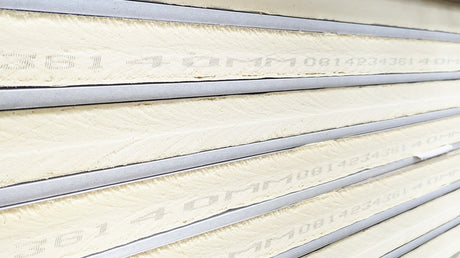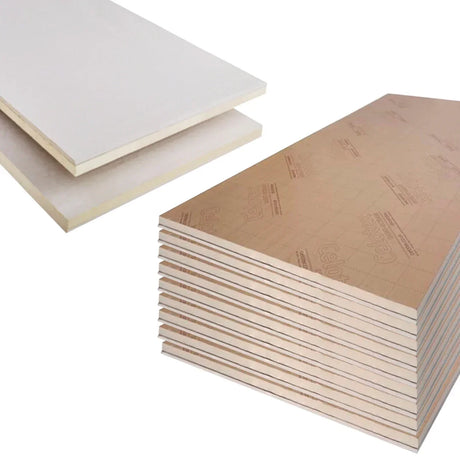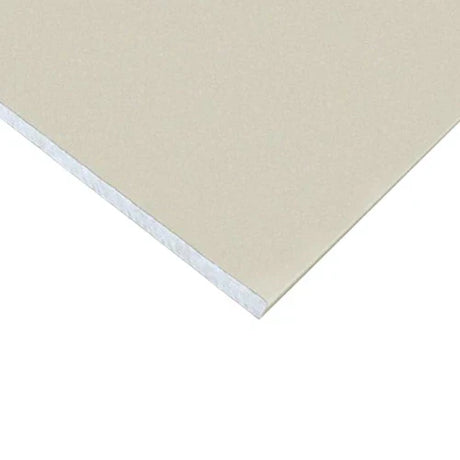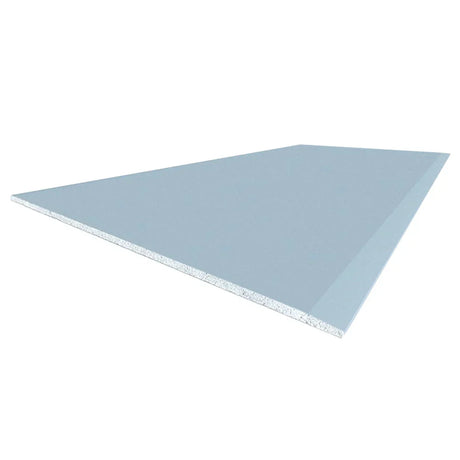When I first started exploring fencing options for my garden, I'll admit I was completely overwhelmed. The terminology alone felt like learning a new language. What exactly were feather edge boards? How did they differ from standard fence panels? And why did everyone seem to recommend them for robust, long-lasting fencing?
After spending considerable time researching and speaking with experienced fencing professionals, I've discovered that feather edge boards represent one of the most versatile and durable fencing solutions available to UK homeowners and tradespeople. This guide shares everything I've learnt about these essential building materials, helping you make informed decisions for your next project.
Understanding Feather Edge Boards: The Basics
The term "feather edge" initially confused me until I saw the boards in person. Each board starts as a standard piece of timber, typically 22mm thick, which is then cut diagonally to create two boards with a distinctive tapered profile. One edge remains thick (approximately 13-15mm), whilst the opposite edge tapers down to a thin profile (around 6mm). This clever design creates the "feather edge" that gives these boards their name.
This unique profile serves a practical purpose beyond aesthetics. When installed with a slight overlap, the thick edge of one board covers the thin edge of the adjacent board, creating a weather-tight seal that effectively sheds rainwater. This overlapping technique has been used in British construction for generations, proving its effectiveness in our notoriously wet climate.
Why Choose Feather Edge Boards?
Having examined various fencing options, I've come to understand why feather edge boards remain such a popular choice amongst both professional installers and DIY enthusiasts. Their popularity stems from several compelling advantages that become apparent once you understand how they function.
The overlapping installation method creates exceptional strength. Unlike lap panels where boards simply sit side-by-side, the overlapped design of feather edge fencing means each board supports its neighbour, creating a robust structure that withstands strong winds and impacts. This strength becomes particularly valuable in exposed locations or areas frequented by children and pets.
Weather resistance represents another significant benefit. The overlapping design ensures water runs down the face of the fence without penetrating between boards. When properly treated and maintained, these boards resist rot and decay far more effectively than many alternative fencing solutions. Leading UK manufacturers like Worcester Timber Products and Grange Fencing pressure-treat their boards, providing protection against fungal decay and insect damage for up to 15 years.
The versatility of these boards impressed me greatly. You can use them to construct complete fence panels, repair existing sections, or even for creative cladding applications on sheds and outbuildings. Their adaptable nature means you're not locked into predetermined panel sizes – you can create fencing to match any height or width requirement.
Specifications and Standards
Understanding the technical specifications helps ensure you select appropriate materials for your project. Standard feather edge boards typically measure 125mm wide, though 100mm widths are also available for specific applications. The length commonly ranges from 900mm (3 feet) through to 1,800mm (6 feet), with some suppliers offering boards up to 2,400mm for taller fencing requirements.
The "ex 22mm" specification you'll see frequently describes the original timber thickness before cutting. After the diagonal cut creates the feather edge profile, you'll have a thick edge of approximately 13-15mm tapering to a thin edge of 6-7mm. This taper proves essential for proper overlapping during installation.
Quality manufacturers source their timber from sustainable forests, typically using pressure-treated softwood that's been processed to withstand the British climate. The pressure treatment process forces preservative deep into the timber fibres, providing protection throughout the board's thickness rather than just on the surface.
Calculating Your Requirements
One of my early mistakes involved underestimating how many boards I needed. The calculation isn't immediately obvious because of the overlapping installation method. With a standard 25mm overlap between boards, you'll need approximately ten boards per metre of fence height when using 125mm wide boards. For 100mm wide boards, you'll need around twelve boards per metre.
Don't forget to account for gravel boards at the base of your fence. These protective boards, typically 150mm high, sit at ground level and protect the main fence boards from soil moisture. Including gravel boards in your initial calculations prevents last-minute supply runs and ensures a professional finish.
When planning materials, consider the frame components as well. You'll need arris rails (the horizontal support rails), fence posts, post caps, and appropriate fixings. Galvanised or stainless steel nails prove essential – never use standard nails as they'll rust and stain the timber.
Installation Principles
Having watched several installations and attempted my own repairs, I've learnt that proper installation technique makes an enormous difference to the finished result. The process follows a logical sequence, though attention to detail at each stage determines the quality and longevity of your fence.
Start by establishing your fence line and setting posts at appropriate intervals, typically 1,800mm apart for standard six-foot panels. Ensure posts are perfectly vertical using a spirit level – any deviation here will cause problems throughout the entire fence run. For concrete posts, you'll fix arris rails into the pre-formed slots. With timber posts, you'll need to create housing joints or use arris rail brackets.
The arris rails provide horizontal support for your feather edge boards. Position three rails per panel for optimal strength: one at the top, one at the bottom (just above the gravel board), and one in the middle. These rails must be level to ensure your fence boards align correctly.
Board Installation Technique
Board installation requires patience and precision. Begin at one end with the first board placed vertically against the arris rails. Ensure this board is perfectly vertical – it sets the standard for all subsequent boards. Fix it in place with galvanised nails driven through the thick edge into each arris rail.
Position the second board so its thick edge overlaps the thin edge of the first board by approximately 25mm. This overlap remains consistent throughout the fence. Crucially, nail each board only through its thick edge before it's overlapped by the next board. This technique allows the timber to expand and contract with moisture and temperature changes without splitting or warping.
Continue this process across the entire panel, checking regularly that boards remain vertical. A string line stretched between the top and bottom rails helps maintain consistent alignment. The final board may require cutting to width to complete the panel – this represents normal practice and shouldn't concern you.
Understanding Pre-Made Panels
Whilst individual boards offer maximum flexibility, many homeowners opt for pre-manufactured panels. These ready-made sections arrive fully assembled, dramatically reducing installation time and complexity. Quality manufacturers like Worcester Timber Products produce excellent panels using the same feather edge profile, incorporating robust framing and stainless steel fixings.
Pre-made panels typically measure 1,800mm (6 feet) wide and come in various heights from 900mm to 1,800mm. The framing consists of 47mm x 35mm treated timber, providing excellent structural integrity. These panels work with traditional timber posts, concrete posts, or modern systems like DuraPost, offering installation flexibility.
The choice between individual boards and complete panels depends on your specific requirements. Individual boards suit irregular spaces, repairs, or projects where you want complete control over dimensions. Pre-made panels excel in straightforward fence runs where speed and convenience matter most.
Maintenance and Longevity
Even pressure-treated timber benefits from additional protection and regular maintenance. I've learnt that a quality fence treatment applied every two to three years significantly extends the life of your fencing. Choose treatments specifically formulated for external timber, which penetrate the wood and provide UV protection alongside weather resistance.
Before treating, clean the fence thoroughly to remove algae, dirt, and debris. A stiff brush and mild detergent usually suffice, though you might need a pressure washer for heavily soiled sections. Allow the timber to dry completely before applying treatment – moisture in the wood prevents proper absorption.
Inspect your fence annually, looking for loose boards, damaged sections, or areas where rot might be developing. Address issues promptly – a single damaged board replaced quickly prevents more extensive problems developing. Check that all fixings remain secure and that posts haven't moved or rotted at ground level.
Sourcing Quality Materials
The quality of materials directly impacts your project's success and longevity. We've experienced the frustration of poor-quality supplies firsthand, which is precisely why we established DIY Building Supplies. We work exclusively with reputable UK manufacturers and suppliers who share our commitment to quality and performance.
When sourcing materials, verify that boards have been properly pressure-treated and carry appropriate guarantees against rot and decay. Reputable suppliers provide clear specifications and are happy to discuss technical requirements. Be wary of exceptionally cheap materials – significant price variations usually reflect quality differences that become apparent only after installation.
Making Your Decision
Choosing the right fencing solution requires balancing practical considerations with budget and aesthetic preferences. Feather edge boards offer exceptional value when you consider their longevity, strength, and versatility. Their traditional appearance suits most UK properties, from rural cottages to urban gardens, whilst their proven performance ensures your investment delivers years of reliable service.
Whether you're planning a complete garden boundary, repairing existing sections, or exploring creative cladding applications, feather edge timber provides a robust, attractive solution. The overlapping design that initially confused me now represents exactly what I'd recommend for anyone seeking durable, weather-resistant fencing.
Expert Support When You Need It
Understanding the technical aspects of building materials needn't be overwhelming. Our team at DIY Building Supplies combines practical experience with technical knowledge to help you select appropriate materials for your specific requirements. We're based in Stapleford, Nottingham, but we ship premium building supplies throughout mainland UK, ensuring you receive quality materials regardless of location.
We believe every customer deserves expert guidance, competitive pricing, and reliable service. Having experienced the frustration of poor-quality products and inadequate support, we built our business around solving these common problems. Our fantastic office and sales team work with a reliable network of suppliers and manufacturers to ensure you receive the materials you need, when you need them.
If you're planning a fencing project and need guidance on materials, quantities, or installation techniques, we're here to help. Our commitment extends beyond simply supplying materials – we want to ensure your project succeeds. Contact us to discuss your requirements and discover how our comprehensive support services can contribute to your project's success.









